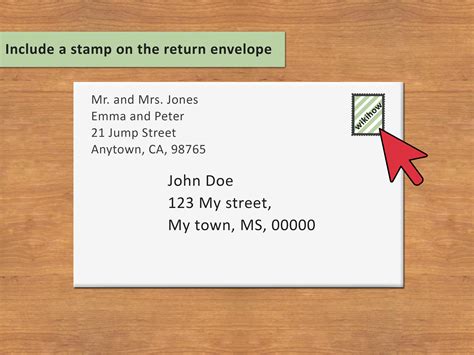Envelope Addressing: Steps, Templates & Examples

Are you sending out invitations or letters and want to make sure your envelopes look polished and professional? Proper envelope addressing is an important part of any formal or business correspondence. In this post, we’ll walk you through the steps to address envelopes correctly, provide templates for different types of addresses, and offer examples of proper envelope addressing for different situations.
Why Proper Envelope Addressing Matters
Addressing envelopes properly is important for several reasons:
- It ensures that your mail reaches its intended recipient.
- It shows respect and professionalism in formal or business correspondence.
- It helps to avoid delays or returns due to incorrect addressing.
Steps to Addressing Envelopes
Step 1: Gather the Necessary Information
Before you begin addressing your envelope, make sure you have all the necessary information. This typically includes:
- The recipient’s full name
- The recipient’s address
- Your return address
Step 2: Choose the Correct Format
There are several different formats for addressing envelopes depending on the recipient and the type of mail. The most common formats include:
- Business: This format includes the full name, title, and company name of the recipient, followed by the street address, city, state, and ZIP code.
- Formal: This format is similar to the business format, but typically includes the recipient’s full name and honorific (e.g. Mr., Mrs., Dr.) instead of a title and company name.
- Informal: This format is less formal and is often used for personal correspondence. It typically includes the recipient’s full name and street address, followed by the city, state, and ZIP code.
Step 3: Write the Recipient’s Name and Address
Once you’ve gathered the necessary information and chosen the correct format, it’s time to start addressing your envelope. Begin by writing the recipient’s name and address in the center of the envelope. Use a clear and legible font, and make sure to include all necessary information.
Step 4: Add Your Return Address
Next, add your return address in the upper left-hand corner of the envelope. This is where the mail will be returned to if it can’t be delivered to the recipient. Make sure to include your full name, street address, city, state, and ZIP code.
Step 5: Add Postage
Finally, add the necessary postage to the upper right-hand corner of the envelope. Make sure to use the correct amount of postage based on the weight and size of your envelope.
Envelope Addressing Templates
Here are some templates for different types of envelope addressing:
| Format | Example |
|---|---|
| Business | Mr. John Smith Vice President ABC Company 123 Main St. Anytown, NY 12345 |
| Formal | Dr. Jane Doe 456 Park Ave. Apt. 7B New York, NY 10022 |
| Informal | Samantha Lee 789 Elm St. Apt. 2 Anytown, NY 12345 |
Examples of Proper Envelope Addressing
Business Correspondence
Mr. John Smith
Vice President
ABC Company
123 Main St.
Anytown, NY 12345
Formal Correspondence
Dr. Jane Doe
456 Park Ave.
Apt. 7B
New York, NY 10022
Personal Correspondence
Samantha Lee
789 Elm St.
Apt. 2
Anytown, NY 12345
Conclusion
Proper envelope addressing is an essential part of any formal or business correspondence. By following these simple steps and using the templates and examples provided, you can ensure that your envelopes look professional and that your mail reaches its intended recipient.
FAQs
What is the correct format for addressing envelopes?
The correct format for addressing envelopes depends on the type of mail and the recipient. Common formats include business, formal, and informal.
What information do I need to include when addressing an envelope?
You should include the recipient’s full name, address, and your return address.
What should I do if I don’t know the recipient’s full address?
You can try using an online address lookup tool or contacting the recipient directly to obtain their full address.
How do I know how much postage to add to an envelope?
You can check the USPS website for current postage rates or use a postage calculator to determine the correct amount.
Is it necessary to use a specific font or style when addressing envelopes?
No, but it’s important to use a clear and legible font to ensure that your mail is delivered to the correct recipient.
